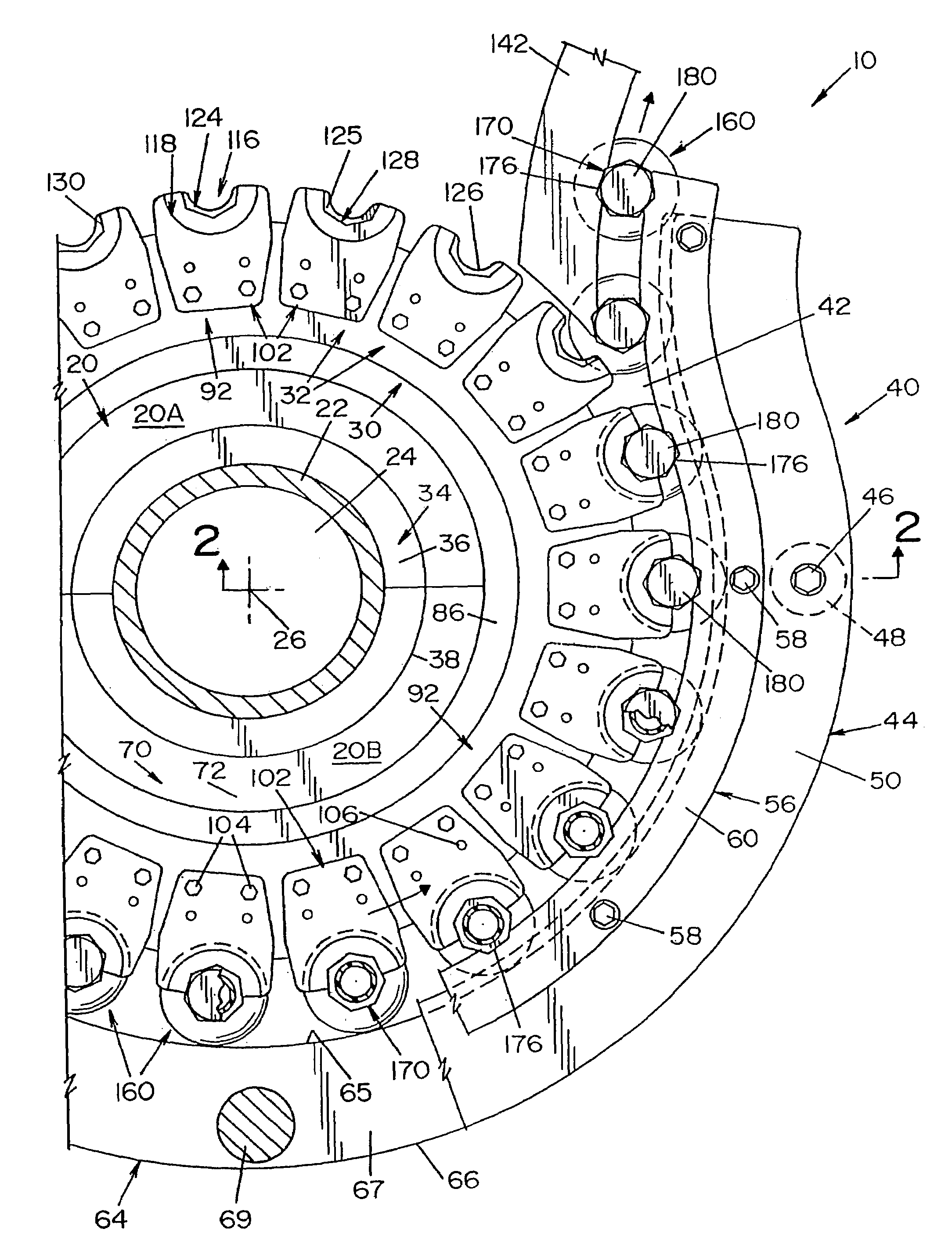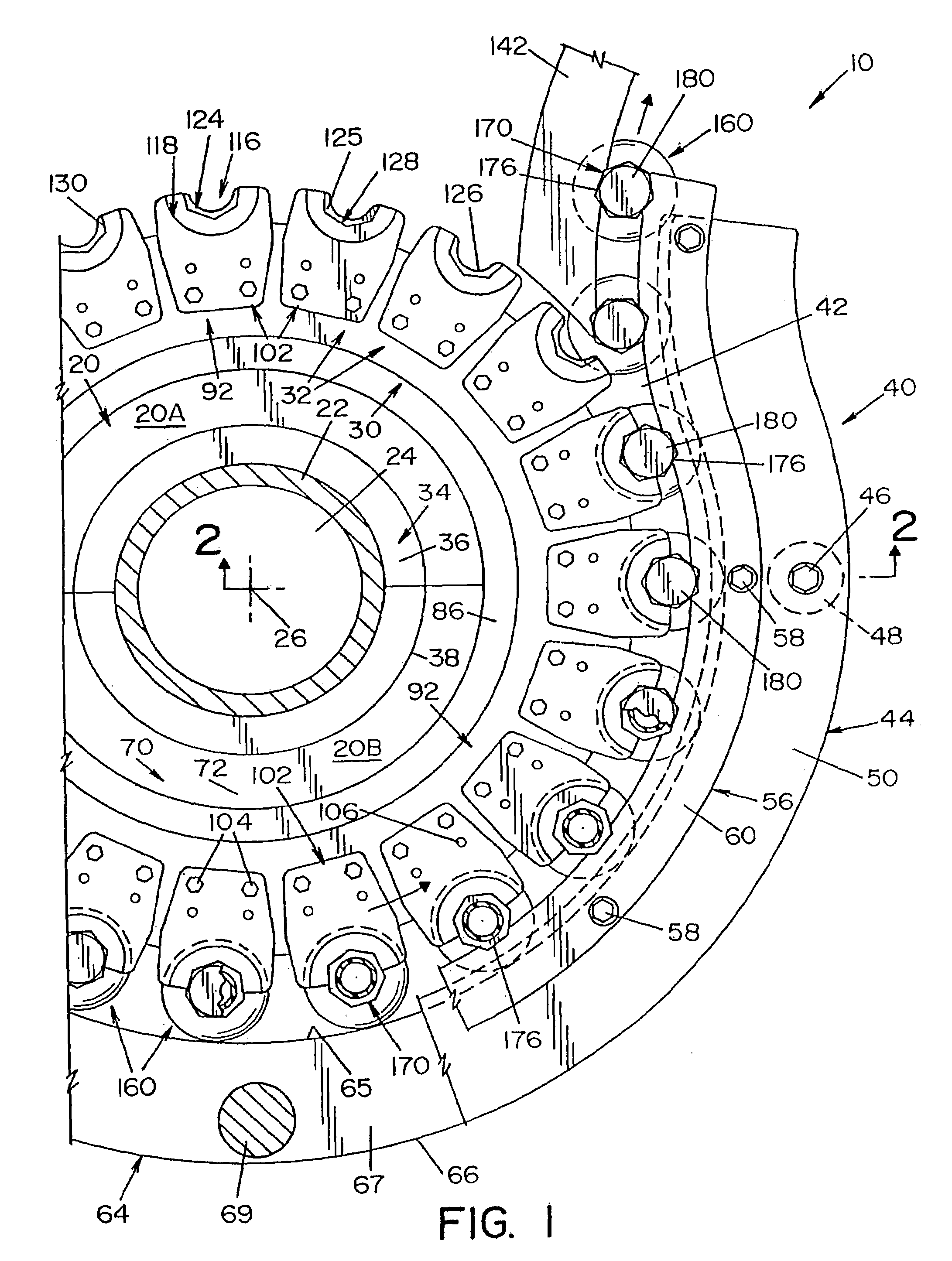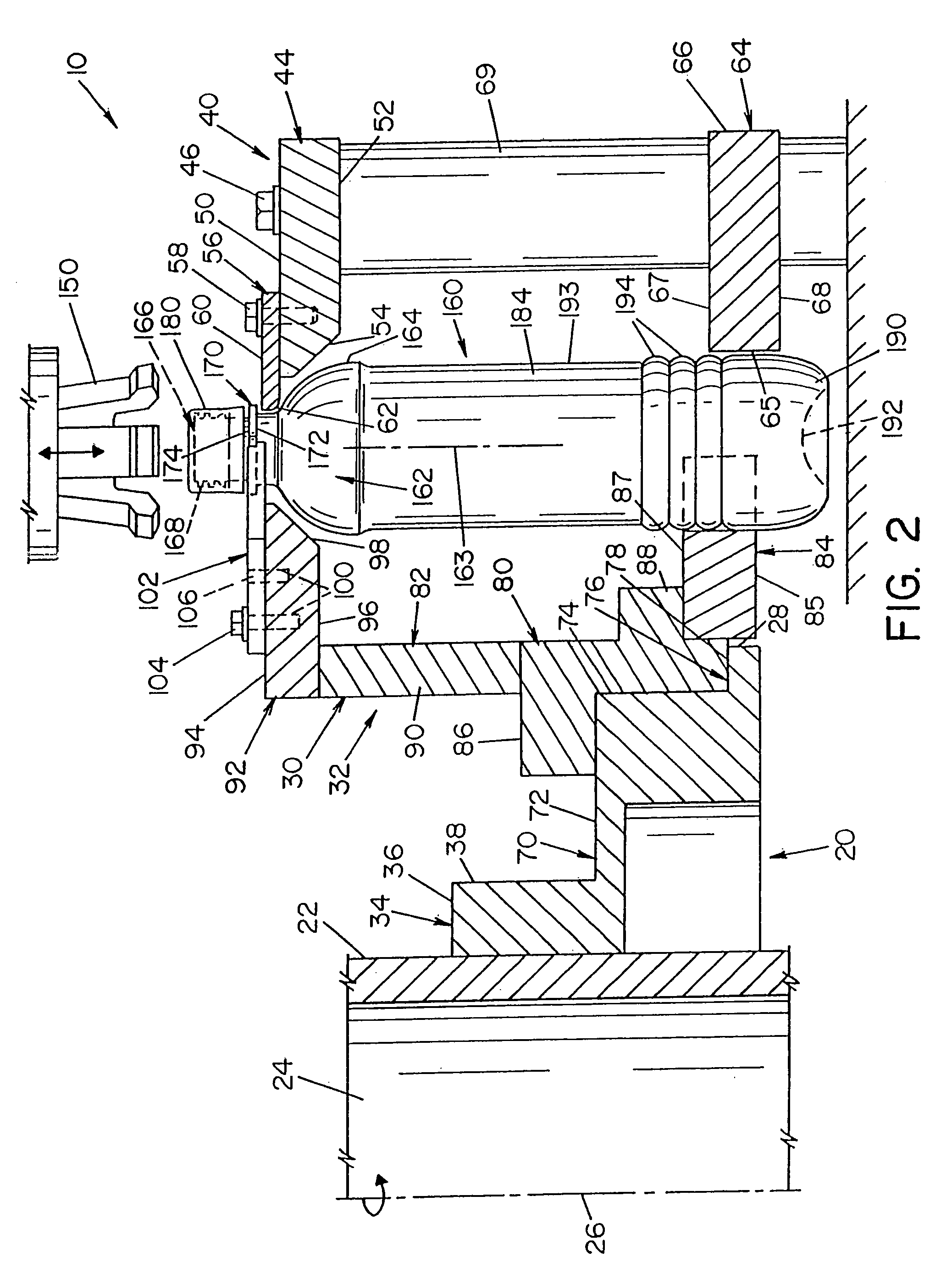One problem in plastic container design is the propensity of PET to succumb to the deleterious effects of stress
cracking and
crazing, which is manifested as almost imperceptible streaks in the plastic, but ultimately can become complete cracks due to stress and other environmental factors.
Relatively unstretched portions of a plastic container that have low degrees of
crystallinity due to the lack of biaxial expansion, such as the central bottom portion, are particularly susceptible to
crazing and stress
cracking.
The relatively unstretched central portion of the container bottom is also frequently provided with a plurality of depending feet that are formed with distention-resistant but stress concentrating areas, and the
composite effect on such areas of stress and strain due to the
internal pressure of the container and external environmental factors can lead to
crazing, stress
cracking and container bottom failure.
Such containers are in common use for large multi-
liter containers for carbonated beverages, even though the provision of a separate plastic base member imposes increased container height, and increased manufacturing and material costs for each container.
The central domed portion of a champagne-based plastic container generally creates clearance for the gate area of the container which is intended to
resist deformation due to the
internal pressure of the container but is sensitive to stress cracking.
However, containers with champagne bases require a greater wall thickness in the base portion to
resist the distending and everting forces of the
internal pressure and form stress concentrations at the annular base-forming transition between the concave central bottom portion and cylindrical sidewall that are prone to stress cracking and rupture when the container is dropped.
Such container designs are still subject, in the absence of relatively thick bottom wall portions, to distention of their concave central portions due to high internal pressures that can create “rockers” and significantly increased interior container volume with lower fluid levels, all of which are unacceptable to purchasers.
Efforts to increase the eversion and distention resistance of the concave bottom portions of such footed containers with thinner bottom wall thicknesses have frequently led to bottom portions including small radii of curvature and discontinuous and abrupt transitions between adjoining surfaces that provide
stress concentration, crazing and stress cracking sites.
However, the use of these plastic bottles has been problematic, especially during the bottling of the non-carbonated beverage.
The absence of gas in non-carbonated beverages has resulted in increased deformation and / or damage of base of the
plastic bottle during the bottling process.
Although the increased wall thickness of the
plastic bottle reduces the incidence of deformation and / or damage of the base of the plastic
bottle during the bottling process, the increased wall thickness translates into increased material costs.
However, the use of the plastic base attachment also increases the cost of the
bottle or container.
As such, the down time associated with a
changeover to different size containers is a significant loss both in dollars and productivity due to reduced output capacity, idle manpower and the skilled
work force required to complete a
changeover.
This force is not sufficient to generate a sufficient frictional force at the base of the container to prevent the container from rotating in the pocket of the capper star wheel.
Container rotation in the capper pocket prevented adequate cap tightening.
Such modifications, while functional, were not acceptable.
The consuming public did not accept configured containers.
Adding friction material to the container materially increased its cost, and its effectiveness was diminished in the event the base of the capper star wheel became wet or was subjected to oil, both of which are common occurrences in the operation of a bottling
plant.
This low capper force makes retention of the container within the pocket very difficult, even with the use of very strong elastic bands in the pocket such as disclosed in U.S. Pat. No. 4,624,098.
This device has several limitations.
For instance, the toothed anti-rotation device is limited to plastic
bottle applications in which the backwardly facing teeth can grip and permanently indent the surface without fracturing the container.
In glass bottles, the shock loading when the backwardly facing teeth grip the neck could result in container fracture.
Furthermore, although the forward and rearward converging surfaces are designed to be easily replaced, the replacement cost for each capper pocket approaches several hundred dollars and is relatively expensive.
In addition, the device is functionally limited.
Many bottle designs curve or taper the neck, and when this occurs, the backwardly facing teeth make detrimental
point contact with the container neck.
More critical, though, is that the neck marking or scoring acts as a stress riser to cause an occasional container failure.
This is unacceptable.
Additionally, the container is aesthetically marred.
Although the capping mechanism disclosed in U.S. Pat. No. 4,939,890 addressed many of the past deficiencies of past capping mechanisms, the improved capping mechanism required a mechanism for exerting a downward force on the container which was expensive and was dependent upon certain structural characteristics at the upper portion of the container itself.
In addition, the use of the knife slightly disfigured the plastic containers, thereby making the containers less aesthetically pleasing to the
consumer.
The provision of a lower circular wear plate with machined recesses, each matching the contour of a pedaloid base of the plastic containers, can be expensive.
This use of a fixed rib constituted an improvement over other arrangements for using a lower plate with specially contoured recesses to provide interference against rotation of the container by the capping head; however, it required a modification of the capping machine and was expensive to retrofit.
Although these prior art capping mechanisms have had excellent success in the bottling of carbonated beverages, problems with damage to the base of the plastic container have resulted when bottling non-carbonated beverages such as water,
fruit drinks and the like.
However, the use of these plastic containers has been problematic, especially during the bottling of the non-carbonated beverage.
The absence of gas in non-carbonated beverages has resulted in increased deformation and / or damage of the base of the plastic container during the bottling process.
Although the increased wall thickness of the plastic container reduces the incidence of deformation and / or damage of the base of the plastic container during the bottling process, the increased wall thickness translates into increase material costs.
However, the use of the plastic base attachment also increases the cost of the container.
In addition, plastic containers that do not have a pedaloid base could not be used in a bottling apparatus that had anti-wear plates to prevent rotation of the container.
Furthermore, due to the scale of these bottling operations and the sizes of the machines used therein, the conveying portion of the bottling process can be significant.
As stated above,
downtime can be costly which necessitates quick changeovers from one bottle size to the next or from carbonated beverages to non-carbonated beverages.
As can also be appreciated, a
changeover which necessitates a modification to the conveying
system can be costly in both man hours used to make the changeover and loss profits for the time in which the operation is
shut down.
Modifications to the neck flange and / or bottle configuration can have adverse affects to the effectiveness of the conveying
system.
Thus, if the neck flange becomes disengaged from the rails of the conveying system, the bottle can become jammed or can fall from the conveying system.
Air escaping from the conveying system can reduce the efficiency of the conveyor.
 Login to View More
Login to View More 


